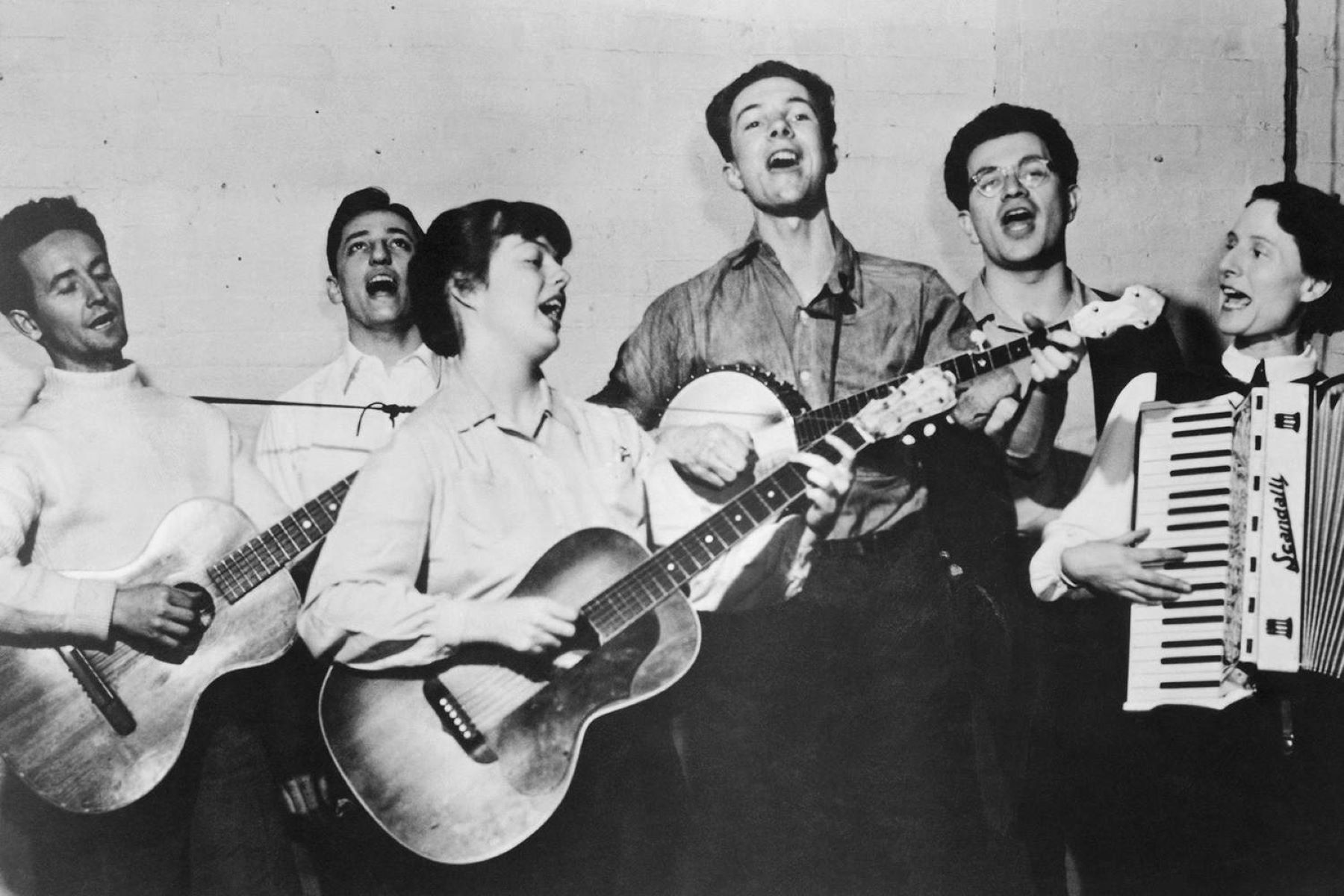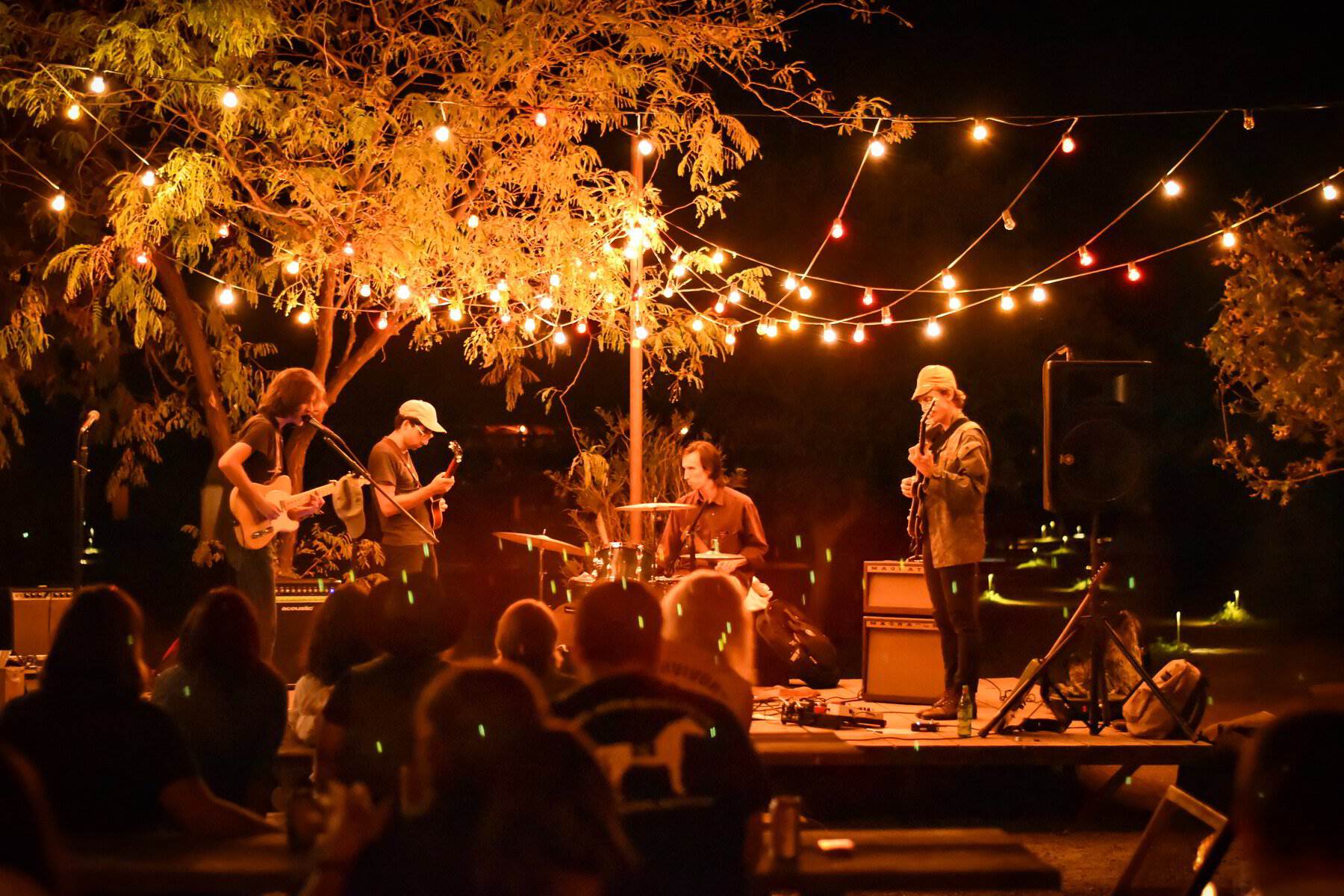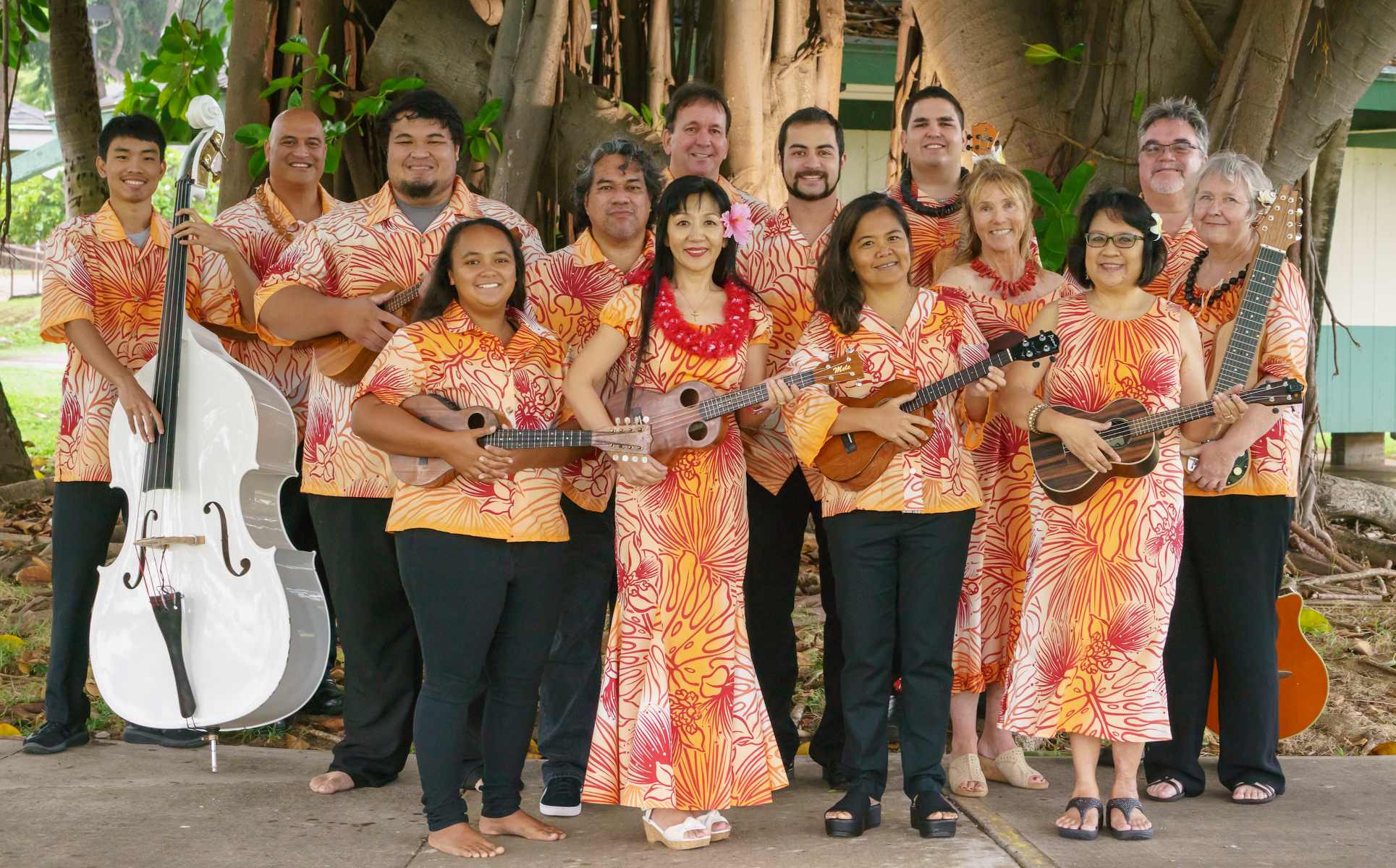

Folk
What Genre Is Folk Music
Modified: January 22, 2024
Explore the captivating genre of folk music, its history, artists, and timeless melodies. Discover the essence and charm of folk music with its rich traditions and heartfelt lyrics.
(Many of the links in this article redirect to a specific reviewed product. Your purchase of these products through affiliate links helps to generate commission for AudioLover.com, at no extra cost. Learn more)
Table of Contents
Introduction
Folk music is a genre that has been deeply rooted in cultures around the world for centuries. It is characterized by its simplicity, authenticity, and connection to the everyday lives of ordinary people. From ancient ballads passed down through generations to modern interpretations of traditional tunes, folk music continues to captivate audiences with its heartfelt narratives and melodic charm.
With its diverse regional variations and rich historical background, folk music has become a cultural treasure that reflects the traditions, beliefs, and struggles of communities across the globe. From the haunting strains of Celtic folk music to the foot-stomping rhythms of American folk and the soulful melodies of Indian folk, this genre encompasses a wide range of styles and influences.
In this article, we will delve into the world of folk music, exploring its origins, characteristics, subgenres, and regional variations. We will also examine the influences that folk music has had on other genres and how it has evolved to embrace contemporary interpretations.
So, join us on this musical journey as we uncover the enchanting world of folk music and discover its enduring appeal and timeless beauty.
Definition of Folk Music
Folk music can be defined as a genre of music that emerges from a particular cultural group or community. It is typically passed down orally or through informal transmission, rather than being composed by a single individual. Folk music is characterized by its focus on storytelling and the portrayal of everyday life, often representing the experiences and struggles of common people.
Unlike popular or commercial music, folk music does not conform to strict commercial standards and is often created and performed by musicians who are deeply connected to their community and cultural heritage. It reflects the traditions, values, and beliefs of a particular group, and serves as a medium for social commentary and cultural expression.
Folk music is known for its simplicity and accessibility, using traditional instruments and melodies that are easy to learn and sing along to. It often incorporates elements of regional dialects, local customs, and historical events, making it a powerful vehicle for preserving cultural identity and heritage.
One key aspect of folk music is its communal nature. It is often performed in social gatherings, festivals, or community events, allowing people to come together, share stories, and celebrate their shared experiences.
While folk music can vary greatly from one culture to another, it is characterized by its authenticity and connection to the grassroots. It represents the cultural fabric of a community, offering insights into its history, struggles, joys, and values.
Overall, folk music serves as a medium through which communities pass on their traditions, preserve their cultural heritage, and connect with their roots. It captures the essence of ordinary life and resonates deeply with listeners, carrying with it the stories and emotions of generations past.
Historical Background
The roots of folk music can be traced back to ancient times, with its origins deeply intertwined with the cultural, social, and historical developments of various civilizations throughout history.
Early forms of folk music can be found in the traditional music of indigenous peoples, such as the Native American chants and drumming, African tribal songs, and the ancient ballads of European cultures. These forms of music evolved organically within communities and were passed down orally from generation to generation.
During the Middle Ages, minstrels and troubadours played a crucial role in popularizing folk music. They traveled from village to village, singing songs that recounted tales of love, heroism, and folklore, often accompanied by simple instruments like the lute or harp.
In the 19th century, folk music experienced a resurgence as a cultural and political movement. In Europe, this was seen in the rise of Romanticism, which led to the collection and preservation of traditional songs and melodies by scholars and collectors.
In the United States, folk music played a pivotal role in the labor and civil rights movements. Songs like “We Shall Overcome” and “This Land Is Your Land” became anthems for those fighting for equality and social change.
The mid-20th century witnessed a folk music revival, with artists like Woody Guthrie, Pete Seeger, and Joan Baez using their music to address political and social issues. This period also saw the emergence of folk festivals and coffeehouse scenes, providing a platform for both established and emerging folk musicians to perform and connect with audiences.
Today, folk music continues to evolve and adapt to the changing times while remaining rooted in tradition. It maintains its relevance as a form of artistic expression, storytelling, and cultural preservation.
From its humble beginnings to its powerful presence in political and social movements, folk music stands as a testament to the resilience of communities and the power of music to unite and inspire.
Characteristics of Folk Music
Folk music is distinguished by several key characteristics that set it apart from other genres. Here are some of the defining traits of folk music:
- Oral Tradition: Folk music is often transmitted orally, passed down from one generation to another through singing, storytelling, or playing instruments. This contributes to its authenticity and connection to community traditions.
- Simplicity: Folk music is characterized by its simplicity in terms of musical structure and instrumentation. It typically features straightforward melodies and arrangements, often using traditional or homemade instruments.
- Reflecting Everyday Life: Folk music represents the experiences and concerns of everyday people. It addresses themes such as love, work, family, social issues, and historical events, serving as a reflection of the lives and sentiments of the community.
- Emphasis on Lyrics: Folk music places great importance on the lyrics, which carry the storytelling and message of the song. The lyrics often contain poetic and metaphorical language, allowing the listener to connect deeply with the narrative.
- Community and Participation: Folk music is often performed in communal settings, encouraging audience participation through singing along, clapping, or dancing. It fosters a sense of togetherness and shared experiences.
- Cultural and Regional Identity: Folk music is closely tied to specific cultures and regions, reflecting the unique traditions, dialects, and customs of a particular community. It serves as a powerful means of preserving cultural heritage and identity.
- Evolution and Adaptation: While rooted in tradition, folk music has also evolved and adapted over time. It incorporates influences from other musical genres and can be interpreted in various styles, allowing it to remain relevant and resonate with different generations.
It is important to note that these characteristics can vary across different folk music traditions and regions. Folk music is a diverse and dynamic genre, shaped by the cultural nuances and histories of the communities from which it emerges.
Subgenres of Folk Music
Folk music encompasses a wide range of subgenres, each with its own unique characteristics and cultural influences. Here are some notable subgenres of folk music:
- Celtic Folk: Celtic folk music originates from the Celtic regions of Ireland, Scotland, Wales, and Brittany. It is characterized by its use of traditional instruments like the fiddle, harp, whistle, and bodhran, and often features haunting melodies and narrative-driven lyrics that reflect Celtic mythology, history, and folklore.
- American Folk: American folk music encompasses a variety of styles, including Appalachian folk, blues, gospel, and protest songs. It traces its roots back to the early settlers and immigrants in the United States and has been heavily influenced by African, Irish, Scottish, and Native American musical traditions. Artists like Bob Dylan, Woody Guthrie, and Joan Baez are synonymous with the American folk music revival of the mid-20th century.
- Bluegrass: Bluegrass music is a subgenre of American folk music with roots in the Appalachian region. It is characterized by its high-energy instrumentals, vocal harmonies, and the use of acoustic stringed instruments like the banjo, fiddle, guitar, mandolin, and upright bass. Pioneers of bluegrass include Bill Monroe, Earl Scruggs, and Lester Flatt.
- World Folk: World folk music encompasses folk traditions from around the globe, showcasing the rich diversity of musical expressions from different cultures. It includes African folk, Indian classical/folk fusion, Latin American folk, and many other regional styles. Artists like Ali Farka Toure, Ravi Shankar, and Mercedes Sosa have contributed to the popularity and cross-cultural appreciation of world folk music.
- Roots/Americana: Roots music, also known as Americana, is a genre that blends elements of folk, country, blues, and rock. It often features storytelling lyrics and relies on traditional instruments like the acoustic guitar, banjo, and harmonica. Artists like Johnny Cash, Emmylou Harris, and The Lumineers have embraced the roots music aesthetic and added their unique interpretations to the genre.
- Protest Folk: Protest folk music emerged during the 1960s as a response to social and political issues. Artists used their music to raise awareness about civil rights, war, and inequality. Songs like “Blowin’ in the Wind” by Bob Dylan and “We Shall Overcome” became anthems for the civil rights and anti-war movements.
These subgenres represent only a fraction of the diverse and vibrant world of folk music. Each subgenre has its own distinct characteristics, yet they share a common thread of authenticity, cultural significance, and the power to connect people through music.
Regional Variations
Folk music exhibits regional variations around the world, reflecting the unique cultural identities and traditions of different regions. These variations emphasize the distinct musical styles, instruments, and themes that are inherent to specific geographic areas. Here are a few examples of regional variations of folk music:
- Irish Folk: Irish folk music is known for its lively jigs, reels, and ballads. It features traditional instruments like the tin whistle, fiddle, accordion, bodhran, and uilleann pipes. The lyrics often tell stories of love, rebellion, or mythological tales, encapsulating the rich history and Gaelic heritage of Ireland.
- Russian Folk: Russian folk music showcases a diverse range of styles, ranging from celebratory dance tunes to soulful ballads. Traditional Russian instruments like the balalaika and accordion are prominent in these compositions. Russian folk songs often reflect themes of love, nature, and patriotism, providing insight into the country’s vast cultural heritage.
- Latin American Folk: Latin American folk music encompasses the vibrant musical traditions of countries such as Mexico, Brazil, Argentina, and Peru. Styles like the Mexican ranchera, Brazilian samba, and Argentine tango showcase the cultural richness and diversity of the region. Latin American folk music often incorporates indigenous rhythms, European influences, and African percussion to create a truly distinctive sound.
- Chinese Folk: Chinese folk music is deeply rooted in ancient traditions and reflects the vast cultural diversity within the country. It incorporates instruments such as the erhu (two-stringed instrument), pipa (plucked instrument), and guzheng (zither). Chinese folk songs often revolve around themes of love, nature, and historical events, offering a glimpse into the cultural heritage of China.
- Malian Folk: Malian folk music, also known as Mali blues, is renowned for its virtuosic guitar playing and mesmerizing rhythms. Artists like Ali Farka Toure and Salif Keita have popularized the rich musical traditions of Mali, blending traditional instruments with elements of Western blues and jazz. Malian folk music often touches upon themes of social issues, love, and spirituality.
- Australian Aboriginal Folk: Aboriginal folk music showcases the ancient musical traditions of Indigenous Australians. It incorporates instruments like the didgeridoo, clap sticks, and various percussion instruments. Aboriginal folk songs often tell stories of creation, dreamtime, and connection to the land, serving as a means of preserving cultural heritage and spirituality.
These regional variations highlight the diverse tapestry of folk music and reflect the cultural nuances and historical narratives specific to each region. They offer a glimpse into the rich musical heritage of different communities and serve as a testament to the power of music in connecting people to their roots.
Influences on and from Other Genres
Folk music has not only been influenced by various genres throughout history but has also had a significant impact on the development of other musical styles. These interconnections and cross-pollinations have led to the creation of unique hybrids and enriched the musical landscape. Here are some examples of the influences on and from other genres:
- Rock and Pop: Folk music played a pivotal role in the development of the rock and pop music genres. Artists like Bob Dylan, Neil Young, and Simon & Garfunkel infused folk elements into their music, blending acoustic instruments with electric guitars and driving rhythms. This fusion gave rise to the folk-rock movement, paving the way for future rock and pop artists to incorporate folk influences into their sound.
- Country Music: Folk music has had a profound influence on country music, with both genres drawing from traditional storytelling and rural themes. Country artists such as Hank Williams and Johnny Cash incorporated folk elements into their music, creating a distinct subgenre known as “folk-country” or “country-folk.” This fusion continues to shape country music to this day.
- World Music: Folk music from different regions around the world has influenced contemporary global music styles. World music artists like Paul Simon and Peter Gabriel have incorporated elements of folk music from Africa, India, and Latin America into their compositions, creating a cultural fusion that celebrates the diverse musical traditions of the world.
- Indie Folk: In recent years, folk music has had a significant influence on the indie music scene. Indie folk artists like Bon Iver and Fleet Foxes have reintroduced a stripped-down, introspective sound reminiscent of traditional folk music. This infusion of folk influences has breathed new life into the indie genre, attracting a wide audience with its raw and emotive storytelling.
- Punk and Alternative: Folk music has found its way into the punk and alternative music scenes, transforming the genres and introducing introspection and socially conscious lyrics. Artists such as Billy Bragg and The Pogues embraced folk-inspired elements and incorporated them into their energetic and rebellious music, creating a unique blend that defied traditional genre boundaries.
These examples demonstrate how folk music has influenced and been influenced by various genres, enriching the musical landscape and inspiring artists to explore new avenues of creativity. The interplay between folk music and other genres has allowed for the evolution and innovation of music, showcasing the power of cross-genre collaborations and the enduring influence of folk traditions.
Contemporary Folk Music
Contemporary folk music represents the evolution of the genre in modern times, combining traditional elements with new artistic expressions. It encompasses a diverse range of artists and styles, reflecting the ever-changing landscape of folk music. Here are some key aspects of contemporary folk music:
1. Diverse Musical Styles: Contemporary folk music encompasses a wide range of musical styles and subgenres, including indie folk, folk-rock, neo-folk, and folk-pop. Artists draw inspiration from various influences, combining traditional folk instrumentation with contemporary production techniques.
2. Social and Political Commentary: Like its historical counterparts, contemporary folk music remains a vehicle for social and political commentary. Artists use their music to address issues such as inequality, environmental concerns, and social justice. This aspect of the genre continues to resonate with listeners, offering a platform for reflection and dialogue.
3. Narrative Songwriting: Contemporary folk music retains a strong emphasis on storytelling through its lyrics. Artists craft intricate narratives, drawing inspiration from personal experiences, historical events, and social observations. This storytelling tradition allows listeners to connect on a deep emotional level and find resonance in the songs.
4. Hybrid Sounds: Contemporary folk artists often experiment with blending folk music with other genres, such as rock, pop, jazz, and even electronic elements. This fusion of styles adds a new dimension to the genre, pushing the boundaries and creating a fresh and captivating sound that appeals to a wide audience.
5. Independent and DIY Spirit: Many contemporary folk artists operate independently, releasing their music through grassroots channels and connecting directly with their listeners. This independent spirit allows for artistic freedom and encourages exploration of unconventional themes and musical approaches.
6. Reinvention of Tradition: Some contemporary folk artists embrace their cultural heritage and reinvent traditional folk music, blending it with contemporary sensibilities. They seek to preserve their traditions while infusing them with new life and relevance, appealing to both traditional folk enthusiasts and a younger generation of listeners.
7. Global Perspective: Contemporary folk music has become increasingly global, with artists from diverse cultural backgrounds contributing to the genre. This cross-cultural exchange enriches the music, introducing new ideas, instruments, and perspectives from around the world.
Contemporary folk music continues to evolve and adapt as artists push boundaries and explore new possibilities within the genre. It thrives on the authenticity, storytelling, and cultural connections that have always been at the heart of folk music, while embracing the creative innovations and influences of the modern music landscape.
Conclusion
Folk music is a genre that has captivated hearts and minds for centuries, with its timeless melodies, powerful storytelling, and authentic connections to cultural traditions. It is a genre that showcases the beauty of simplicity, reflecting the everyday lives and experiences of ordinary people.
From its humble beginnings as music passed down through generations to its modern interpretations and influences on other genres, folk music has demonstrated its enduring appeal and adaptability. It has evolved and transformed while staying true to its roots, offering a platform for social and political commentary and preserving cultural heritage.
Throughout history, folk music has served as a universal language, transcending borders and connecting people from different cultures and backgrounds. It has the power to bring communities together, foster a sense of identity, and evoke strong emotions in listeners.
Contemporary folk music continues to evolve, with artists exploring new sounds, incorporating diverse influences, and addressing pressing social issues. This genre remains a testament to the power of music as a means of self-expression, storytelling, and cultural preservation.
As we explore the subgenres, regional variations, and influences of folk music, we are reminded of the richness and diversity of our musical heritage. From Celtic melodies to American folk ballads, from Latin American rhythms to Malian blues, folk music encompasses a vast tapestry of sounds and stories that have shaped our world.
Whether it is listening to the haunting tunes of traditional folk songs or discovering the innovative sounds of contemporary folk artists, we are invited on a journey that transcends time and connects us to our shared human experiences.
So, let us continue to appreciate, celebrate, and support folk music, for it is a treasure trove of history, culture, and the wisdom of the people. Through its melodies and lyrics, folk music serves as a constant reminder of the power of music to inspire, unite, and touch our souls.











